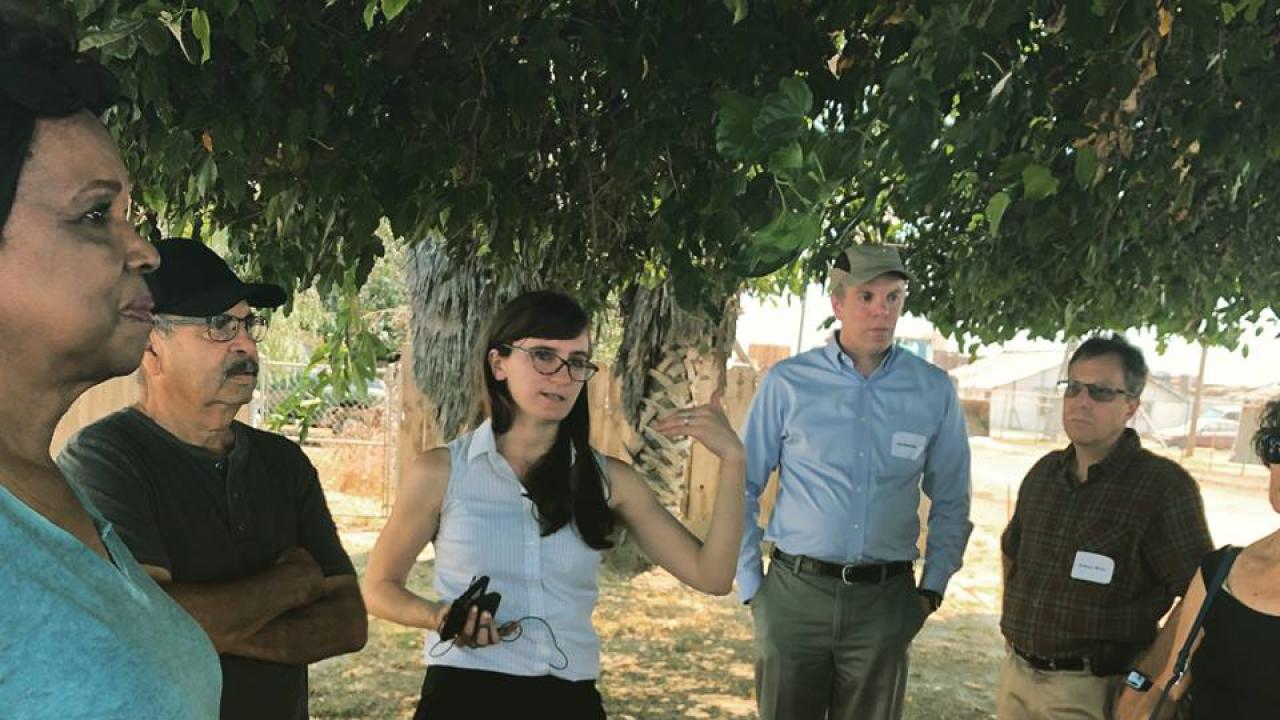
Smoky air a reminder not everyone walks away from environmental disasters
When the air in the San Joaquin Valley was thick with smoke during Butte County’s Camp Fire late last year, UC Davis closed its doors to protect students, staff and faculty. Rather than ask us to traverse campus for classes and meetings, the administration told us to steer clear of the bad air by working remotely. My colleagues and I felt lucky working for an institution that cared about our health, and I was grateful to have a well-filtered retreat at home. But the privilege also reminded me that many communities can’t easily close up shop in the face of poor air quality, contaminated water or exposure to dangerous toxins.
One of the guiding principles of the Environmental Health Sciences Center (EHSC) at UC Davis is to understand environmental health threats in California by developing research that has a bigger and better impact on people living in its communities. To help researchers understand what these communities face, EHSC organized an Environmental Justice Tour with staff from our federal funders at the National Institute for Environmental Health Sciences (NIEHS).
The tour’s main purpose was to give community organizations and residents of the San Joaquin Valley an opportunity to express their health concerns to researchers. Organizations throughout the San Joaquin Valley already work tirelessly to address these concerns, conduct research, mobilize and seek policy change to improve residents' health and well-being. For EHSC researchers, the gathering was a way to learn how to collaborate on these efforts, as well as to share their own expertise with community members.
EHSC created a video of the tour (below) to highlight some of the issues community organizations and residents discussed, which hopefully will serve to inspire greater collaboration and connection between communities and the university.
In the video, the Community Water Center, Central California Environmental Justice Network, Central California Asthma Collaborative, Leadership Counsel for Justice and Accountability, Californians for Pesticide Reform, and Fathers and Families of San Joaquin share their work around environmental injustices that plague the San Joaquin Valley. These include:
- Air quality affected by oil drilling
- Rapid industrial development in formerly agricultural areas, bringing truck traffic and decreasing water availability for residents
- Poor water infrastructure in small towns and unincorporated communities, leaving residents with contaminated water sources
- Elementary schools located in close proximity to industrial sites, truck idling and major freeways
- Schools and neighborhoods located near agricultural fields regularly sprayed with pesticides
- The impact violence has on our social environment
In the video, area resident Katie Taylor shares her concerns about the changes coming to her neighborhood as it transitions from agricultural to industrial, bringing with it increased truck traffic, pollution and groundwater contamination at home.
One of the most effective ways researchers can play a role in lessening these environmental health burdens is by seeing them up close to gain better insight from those who have no choice but to live with environmental injustice every day. Our tour provided a glimpse and first step for many researchers to develop meaningful partnerships that will hopefully lead to tools and information that help everyone steer clear of bad air, or maybe even clear the air for good.
Aubrey Thompson is the former program manager for the Environmental Health Sciences Center's Community Engagement Core.